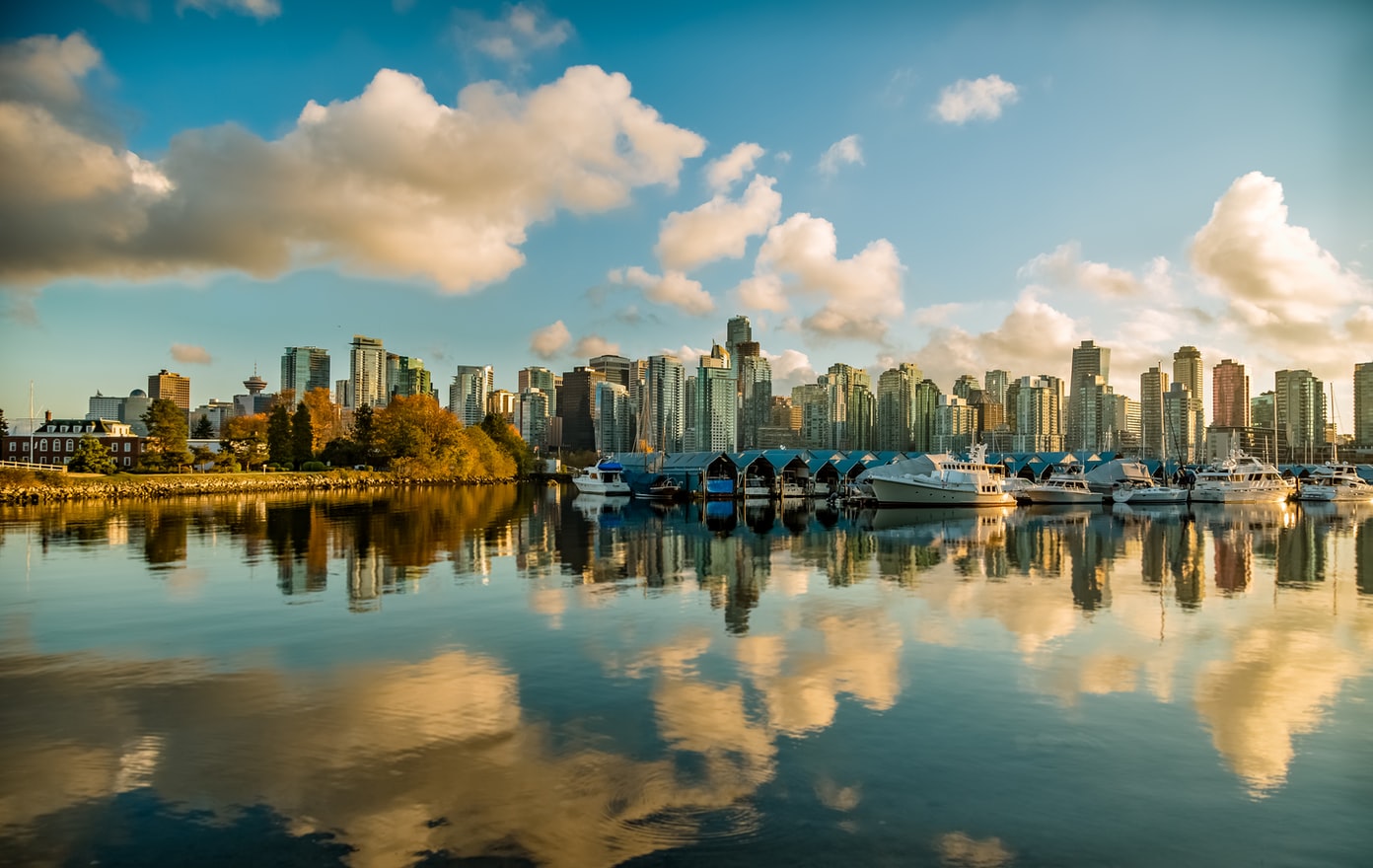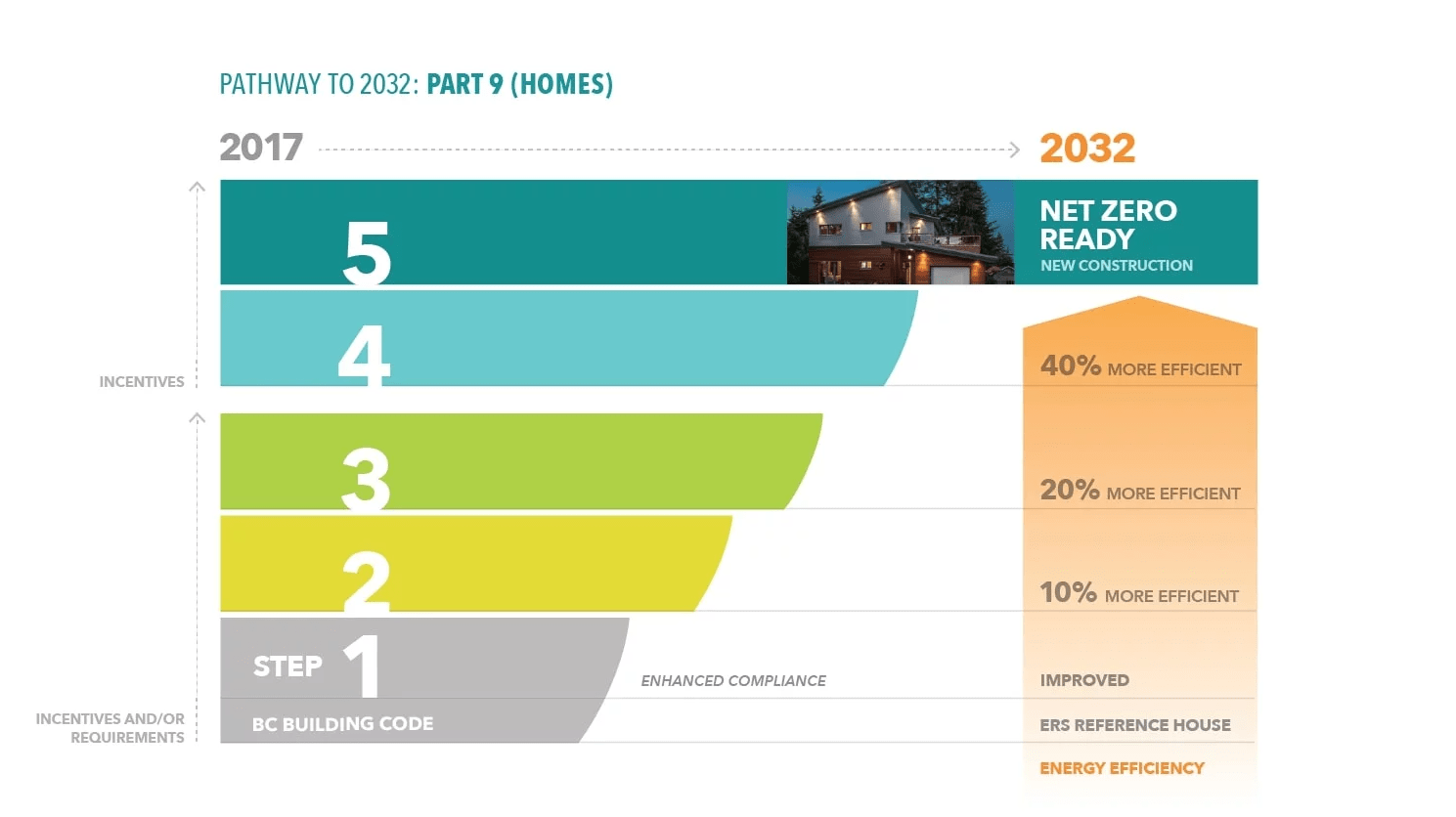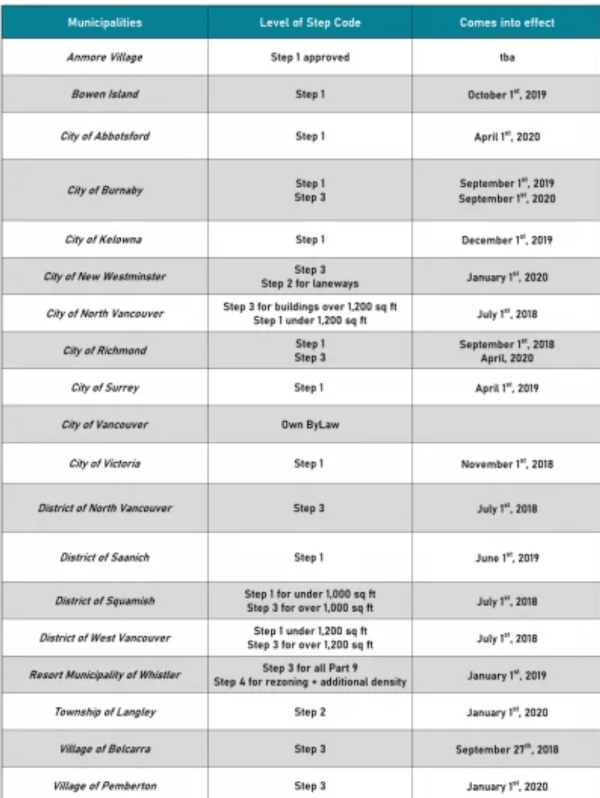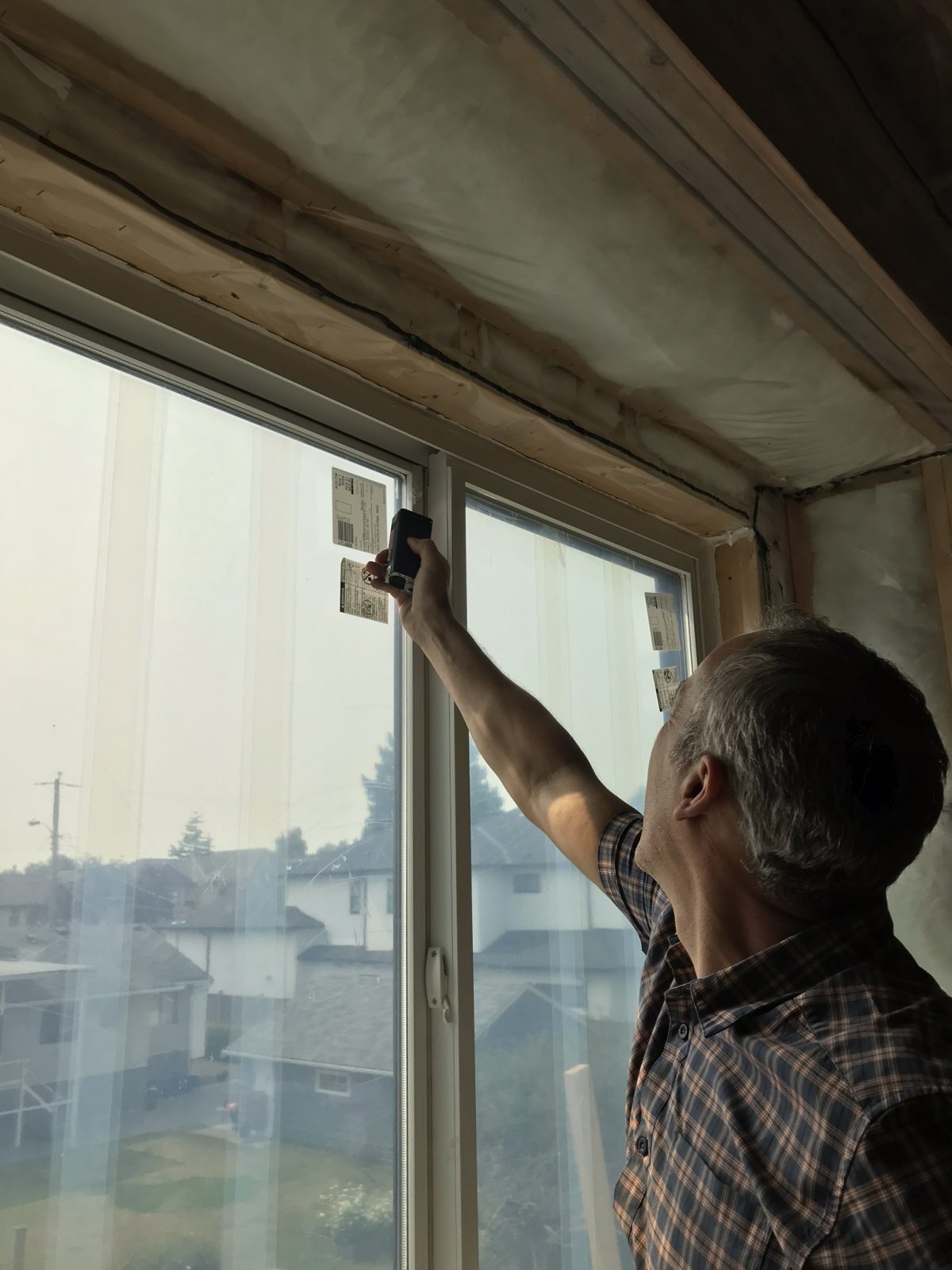

Climate adaptation is one of the major challenges of our time. Now more than ever governments at the Federal, Provincial, and Municipal levels are realizing the effects of Man-made climate change. Today is the time to find solutions for a more sustainable future. The Province of British Columbia has a strategy to transition to Net-Zero energy ready buildings by 2032. How is it going to happen ….. ?
One step at a time.
What is the BC Energy Step Code?
The BC Energy Step Code is a voluntary Provincial standard for new builds that was introduced in December of 2017. The new BC Energy Step Code is designed to increase energy efficiency in new home construction across the housing sector. Another main objective of the Step Code, is to help harmonize local building codes across the Province. This will help eliminate red tape and confusion for stake holders such as Builders, Developers, and Home Owners, who build in multiple jurisdictions. It provides a series of measurable, performance-based energy-efficiency requirements that go above and beyond the Prescriptive path of the BC building Code.
The standard consists of a series of steps (1 to 5) that local governments may use to incentivize or require a level of energy efficiency in New construction. Builders can also voluntarily choose to build to higher Step Code levels. Rebates are available from FortisBC for reaching the Step Code targets.
How does it work?
The BC Energy Step Code is a new performance-based compliance approach. It gives the builders flexibility to achieve the required metrics with different configurations of envelope details, insulation levels, increased performance from windows and doors, and HVAC systems. Unlike the old prescriptive path approach the goal is to exceed code minimum and build energy efficient homes that perform well as a system.
Which municipalities have adopted the BC Energy Step Code?
All information below is regarding Part 9 residential buildings: Single family homes, coach houses, smaller townhouses (under 6,000 sq.ft) as of October 15th, 2018 for the Lower Mainland jurisdictions.

For Implementation updates, click here.
An important element of the Energy Step Code is that the final “as-built” home needs to reach the target set at the design stage. We are Energy experts and will assist throughout building process to safeguard there are no surprises at the end of the project.
BC Energy Step Code Rebate for new builds
The Province along with FortisBC have introduced New Home Rebates that relate to the Step Code.
Our goal is to help strengthen the building industry, and the BC Energy Step Code is a great way to guarantee that success. Together let’s build healthy durable homes, that last generations. Why not Add Capital to your Home!
Feel free to contact us for more information at [email protected] or 604-562-0387
For more information and resources for the Energy Step Code, you can visit their website here.

What role does the Energy Advisor play?
The Energy Advisor assists builders and homeowners along all stages of the building process. At Capital Home Energy, we provide pre-permit Energy Modeling which helps identify strategies to optimize the home’s energy usage, air tightness, and overall thermal comfort of the house.
We also provide Blower Door air tightness tests at key stages of the construction. The mid-construction blower door test, or pre-drywall test, is the key to success when building any airtight home. It offers an opportunity for the builders to improve an already air tight design and address any deficiencies in the air barrier.
The Final Evaluation ties the whole process together. We measure the home’s final ACH (ACH = air changes per hour) and energy consumption and issue an overall EnerGuide Rating score. This rating measures a home’s overall annual energy consumption and is used across Canada to compare a home’s performance.
The final air tightness score will highlight how air tight a home is. A typical new construction in the City of Vancouver achieves 3.5 ACH, while the most air tight designs often score lower than 1 ACH. The lowest score we’ve seen is 0.24 ACH, for a Passive House design.
Contact us to start on your next Airtight project.

